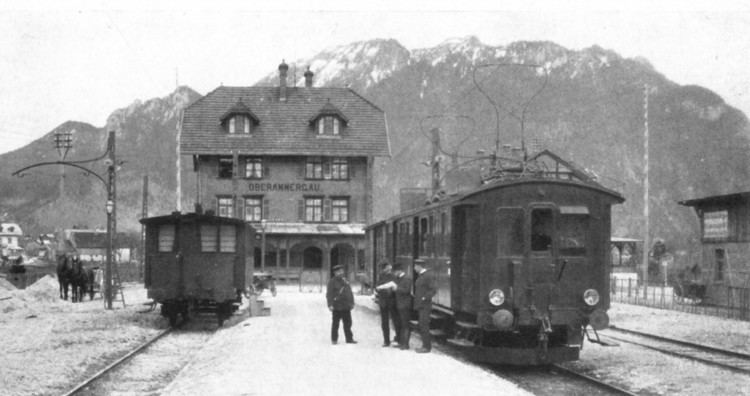 | ||
A Lokalbahn or Localbahn ("local line", plural: -en) is a German term that usually refers to a railway line worked by local trains serving rural areas, typically in Austria and the south German states of Bavaria and Baden-Württemberg. Lokalbahnen appeared at the end of the 19th century before the use of cars became widespread.
Contents
Development
Because the construction and operation of main line railways was not always covered by their income, simpler solutions were sought. As early as 1865 the engineering conference of the Union of German Railway Administrations (Verein Deutscher Eisenbahnverwaltungen) had set out the principles for secondary lines. These were enshrined in law in 1878 with the Railway Act for German Railways of Secondary Importance (Bahnordnung für deutsche Eisenbahnen untergeordneter Bedeutung).
Bavaria
By the 1880s, the Bavarian main line network was largely completed and attention now turned to its expansion into the hinterland. On 21 April 1884 the first Bavarian Lokalbahn (also spelt Localbahn) law was passed. This was based on the premise that funding for land purchase and construction would be a local affair, although earthworks would be paid for by the state. However, the state would also take the profit.
To make them viable, the Lokalbahnen were to be built and operated as simply as possible. Structures too were to be simple. This led to the widespread use of standard buildings and structures; nevertheless branch lines and their stations still retained a lot of individual character based on the region and local material available for construction.
The real boom period for branch line construction in Bavaria was from 1894 to 1910, a time when more than half of all branch lines were completed. The average time to build was four years and the construction cost worked out at about a fifth that of main lines per kilometre.
The Lokalbahnen in Bavaria were built to standard gauge and, initially, an axle load of just 10 tons.
Characteristics
A Lokalbahn line typically began at a station on the main line and ran, as a branch line, to the next largest town. On the lowland plateaus of Bavaria, for example, many market towns and other towns were linked to the railway network by Lokalbahnen.
In keeping with their secondary status and simplified regulations the following simplifications were made to improve their economy compare with the main lines:
From the 1950s, increasing bus and car traffic led to the closoure of branch lines, including numerous lines built as Lokalbahnen. Several routes continue to be operated today as heritage railways. Sometimes lines that are still referred to today as Lokalbahnen have been upgraded into modern modes of transportation and local means of public transport. In Vienna, the Badner Bahn still carries its Lokalbahn designation, despite operationally being a modern tram-train line.
